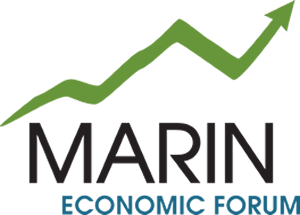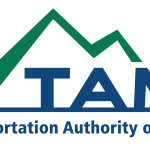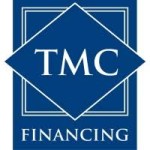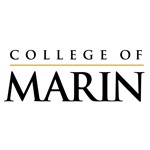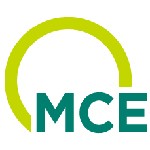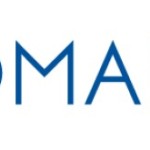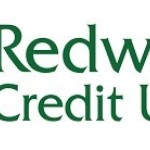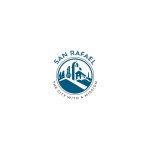MEF Newsletter April 2016
April 2016
 Getting SMARTer about housing in Marin County
Getting SMARTer about housing in Marin County
In 2008, I was lucky enough to be asked to help the proponents of the Sonoma-Marin AREA Rapid Transit or SMART Rail system consider the financial aspects of asking both Marin and Sonoma counties to add a $0.25 sales tax to fund a new way to get to work and to get around these two counties. The new tax was passed in the 2008 election and the work has been ongoing to build the infrastructure. In 2016, there will be service between the Sonoma County Airport and Larkspur Landing, allowing most of the two counties’ population to use a rail alternative to single-driver car travel to and from work.
Transportation and housing are intrinsically linked with each other. This is why mass transit usually ends up where there are masses of people. In this month’s edition of the MEF newsletter, I want to make some points about local housing options and some considerations. There is a theoretical way to understand housing and all the players inside Marin County. A housing continuum is an idea that people can slide up and down a continuum of choices. Here are two ways to see such a continuum:
Affordable housing is a definition for housing that suggests a subsidy may help lower the cost of housing to at least 30 percent of household income for a tenant. People tend to conflate “affordable” as a label for any subsidized housing. True affordable housing is at the lowest end of the spectrum of subsidized come from to help reduce housing costs. This is where most of the social action is in terms of housing because this is where the income mix includes those that are on governmental assistance, working in low-wage jobs, and otherwise living on the edge or in poverty. This is also where homelessness and transition housing end and more “stable” housing begins. Fair housing is meant to keep housing affordable, and is related to the general idea of “affordable” housing.
Workforce Housing is probably the most contested definition within the housing continuum. There is a federal definition for people earning between 80 and 100 percent of the median household income in a defined area (depending on who you ask). If a housing unit is designated for workforce housing, it is usually based on the federal definition, and not on the current employment status of the tenant. Because the range of income possibilities is generally from 80-100 percent of local median income, we can assume the large proportion of those that qualify for workforce housing (if labeled as such and available) are actually working and earning an income level necessary to creep toward the median or just above it. The employment status is not a factor, the income is, which makes the debate around “workforce” housing trickier. Another definition is when an employer provides housing directly as a fringe benefit to the employee (many universities and larger employers do this as a way to reduce wage ascension and/or keep the workforce close to the workplace for production efficiencies/necessities).
Market-Priced Housing is exactly what it says: supply and demand together determines the price.
For commuters, we assume that the housing prices faced elsewhere (outside Marin County) provide an incentive for these workers to live elsewhere and come into Marin County for work. The SMART rail system is meant to link population centers in Sonoma County to points in Marin County, and ultimately connect to San Francisco. Time will tell if new housing is built, and where it lies on the specific continuum discussed here, but we should assume more housing will be needed as population grows and employment opportunities do also.

MARINOVATORS showcases the innovation and creativity of
Marin County student scientists, engineers, designers and MAKERS. These
projects demonstrate our student’s ability to apply their knowledge of Science,
Technology, Engineering, Arts/Digital Design and Math in the real world.
Saturday, April 30, 2016
10am-3:00pm
College of Marin Academic Center, Kentfield

First 5 Marin’s Annual Policy Breakfast
Friday May 13, 2016
8:30am-10:30am
Embassy Suites
101 McInnis Pkwy., San Rafael 94903
No fee to attend, complimentary Continental Breakfast
Join us for an important community discussion about race, ethnicity and inequity in Marin Count, and the impact on our children. We are planning an interactive event and we invite you to join the conversation. Our program will be moderated by Johnathan Logan from the Marin Community Foundation.
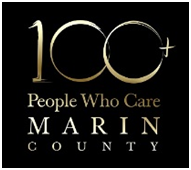 FOR IMMEDIATE RELEASE
FOR IMMEDIATE RELEASE
100MARIN Awards $35K to Wednesday’s Gift; $4K to Runners-Up
Novato, CA, March 10th, 2016 – Marin’s premier giving circle, 100+ People Who Care: Marin County (100MARIN), hosted its Spring 2016 event on Thursday, March 10th, from 6-8PM, at The Buck Institute for Research on Aging in Novato, CA.
With close to 300 attendees and 350 total givers, 100MARIN’s top award of $35K went to Wednesday’s Gift, a program that provides emergency, one-time assistance to individuals and families in crisis.
“Wednesday’s Gift would like to thank 100+ People Who Care: Marin County for their generous gift. You have provided a boost that will allow us to increase the number of people we help throughout Marin County,” said Wednesday’s Gift’s Board Secretary, Aileen Wormwood. “With these funds, we plan to forge stronger partnerships with Marin’s social services, so that we can keep despair at bay for those who need help staying in their homes or providing food for their families. 100MARIN’s gift will help to widen our circle, foster more kindness and compassion towards those in need, and allow us to offer services to more local individuals and families. 100MARIN has helped us ‘Be the change we want to see in the world.’ Thank you for this great honor!”
The event was hosted by CORE, a local group of business professionals, the members of which have a shared passion for Marin County and its non-profit community. The evening’s marquee sponsors were Pacific Union International and International ProInsurance.
The presenting non-profits were as follows:
And through the generosity of the following additional sponsors, each of the 4 runners up was awarded $1,000:
The event’s format was as follows: 5 non-profit organizations each gave timed 4-minute presentations during which they shared their mission, vision, need, and impact in Marin. All attendees were then asked to vote for their favorite presentation, at which point the votes were tallied, and Wednesday’s Gift was announced as the winner.
David Haydon of Il Davide catered the event and Frank Family Vineyards, Starry Night Winery, VIAS IMPORTS LTD, and A.L. Romano Wine Company all poured wine.
This event comes on the heels of 100MARIN’s inaugural year, during which the circle members awarded roughly $60K to local non-profits in 2015.
CORE’s Vice President and principal of Portico Wealth Advisors, Jonathan Leidy, emceed the evening, and said the following:
“100MARIN just continues to grow, and with that growth comes bigger and bigger impact within Marin County.
We now have over 200 full-time members and a host of additional supporters. Together, we are all making a difference, each leveraging our $100 donations to create a truly meaningful gift for one local nonprofit.”
For more information about 100MARIN or the most recent event please contact Nina Gardner, nina@filice.com or 415-717-8583.
About 100MARIN
100MARIN is Marin County’s premier giving circle. Founded in 2015 by members of the local professional development group, CORE, the group’s mission is to exponentially expand the giving power of its members in order to benefit local non-profits. To date, the group has given away roughly $102K to deserving Marin County non-profits, and is the official philanthropic outreach arm of the Marin Economic Forum. More information about 100MARIN can be found at www.100MARIN.org.
About Wednesday’s Gift
Helping people any way they can is the motto at Wednesday’s Gift. They provide one-time, emergency assistance for individuals and families in need, without delay. Special emphasis is placed on provisioning their clients with necessities, like food, clothing, and shelter. In providing this one-time, “no questions asked” aid, Wednesday’s Gift is helping to fill the gap between social services and the ongoing programs provided by other non-profits. More information about Wednesday’s Gift can be found at www.wednesdaysgift.org.
About “100 People”
The “100 People” giving model was reportedly started in November 2006 by Karen Dunigan of Jackson, MI, as a simple way to raise money for local charities. There are now reportedly hundreds of “100 People” giving circles throughout the United States, including 7 in California: Central Coast, Napa Valley, San Louis Obispo, Santa Cruz, Silicon Valley, and Ventura County. More information about the “100 People” model can be found at www.100wwc.org.

April
May
